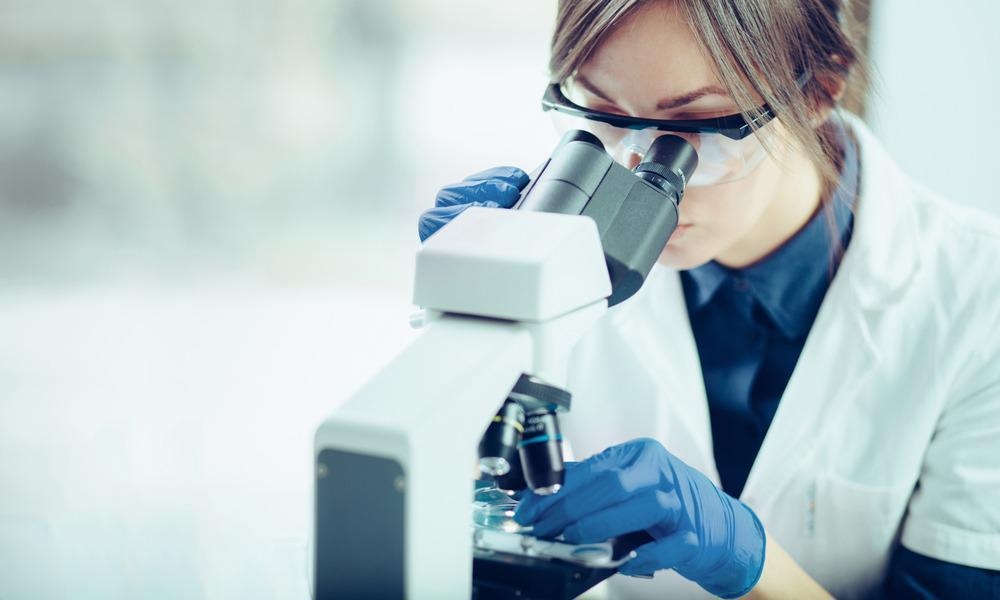
Image Credit: Likoper/Shutterstock.com
The complexities of nanoscale surface measurement are anything but nano-sized. With the advancement of nanotechnology, nanoscale surface measurement is an integral part of the development of this ever-growing field. Traditional microscopy such as optical microscopy is not always sufficient for use with nanoscale surfaces due to optical diffraction, and any flaws require detection to prevent future damage to nanoscale surfaces. From precision engineering to international compatibility, the challenges that occur with surface measurements at the nanoscale will be explored further in this article with comparisons with its traditional counterpart.
The nanoscale consists of 1-100 nm and so surfaces of this size require immense consideration to ensure the quality is absolute for successful nanotechnology applications.
Surface topography on a microscale can be observed using methods such as optical microscopy, scanning electron microscopy, and atomic force or scanning probe microscopy. These techniques usually require high vacuum environments with the substrates being examined under these conditions. However, techniques that require such tenacious environments cannot be used for liquid or volatile chemicals and this illustrates the need for using more than one technique.
When combining more than one method of surface characterization, it is important to be aware of the required criteria. These can include the depth of surface analysis, chemical information, quantitative or qualitative insight, lateral resolution, which allows for small features to be analyzed, as well as surface topography.
Surface Topography: Nanoscale versus Traditional Surfaces
The key difference in surface topography between nanoscale and traditional surfaces is the manufacturing resolution and precision measurement. Larger surfaces are easier to measure and analyze with lower resolutions being used, thus making them easier to manufacture. However, although the challenge of surface topography characterization can be overcome with novel developments of nanoscale traceable artifacts and roughness parameters, this field is still a hardship for precision engineering and microengineering.
Traceability and International Compatibility
A further challenge that expands to being a worldwide issue includes traceability of surface measurements for international standards. Traceability of both hardware and software is critical in the current climate of global outsourcing, and so traceability of different surface texture measurements by varying instruments is required for compatible results.
Optical metrologist, Ulrich Brietmeir, advises that mechanical surfaces remain the default surface when it comes to surface measurement as “all optical measurements are not true because none takes account of polarisation and phase changes”.
While true traceable nanoscale surface measurement has been developed with uncertainties being outlined, a 3D version, which will be invaluable for traceable metrology, is still in its developmental stage. Traceability of hardware is currently achieved through certified calibration standards, however, with global outsourcing, international collaboration may be needed for international compatibility.
Structured Surfaces
Structured surfaces, which are designed to provide a specific functional performance, such as a retro-reflective pyramid within a road sign, are also a challenge at a micro and nanoscale level.
Field parameters which are statistical techniques that characterize certain traditional stochastic surface patterns, fail to illustrate structured surfaces effectively. However, with optimized-engineered surfaces being on the rise to increase functional performance and lower economic strain, the result consists of more structured patterns being left on surfaces. This necessitates a requirement for hybrid techniques that can better solve this novel characterization issue more effectively.
The advancement of this field will result in highly structured surfaces at the micro and nanoscale, with high aspect ratio surface features such as from the etching of silicon.
These structured advancements at the nanoscale will require novel analytical techniques such as isolating dominant features and understanding their standard geometry. This enables statistical analysis on the deviation from the idealized form of structural patterns on surfaces.
The challenge of surface geometrical patterns lies in the individual pattern features that require comprehension through careful extraction. The measurement process can produce insignificant artificial features which can affect the pattern analysis. This becomes more arduous when measuring nanoscale surface patterns, with pattern analyses being easier to disrupt. In turn, this can cause the characterization of these patterns to become more difficult when attempting nanoscale surface measurement.
With the microreplication process and more intricate nanoscale surfaces being required for scientific and business demands, surface metrologists are faced with arduous challenges.
Relying on traditional surface measurements can become problematic due to the depth of surface analysis as well as the precision engineering attached to surface creation at nanoscale. This predicates necessary hybrid techniques for more accurate nanoscale surface measurements. These will have to be developed to meet the needs of this ever-growing field.
References and Further Reading
Blunt, L., Jiang, X. and Scott, P., 2005. Advances in Micro and Nano-Scale Surface Metrology. Key Engineering Materials, 295-296, pp.431-436. https://doi.org/10.4028/www.scientific.net/KEM.295-296.431
Ebnesajjad, S., 2014. Surface and Material Characterization Techniques. Surface Treatment of Materials for Adhesive Bonding, pp.39-75. https://doi.org/10.1016/B978-0-323-26435-8.00004-6
Disclaimer: The views expressed here are those of the author expressed in their private capacity and do not necessarily represent the views of AZoM.com Limited T/A AZoNetwork the owner and operator of this website. This disclaimer forms part of the Terms and conditions of use of this website.